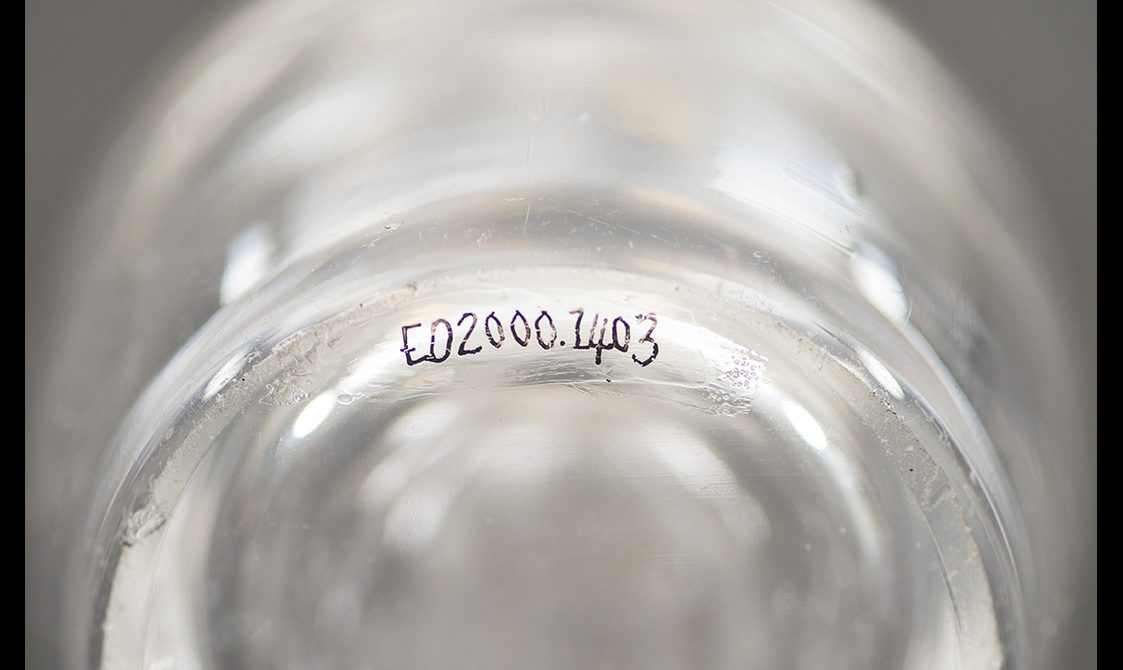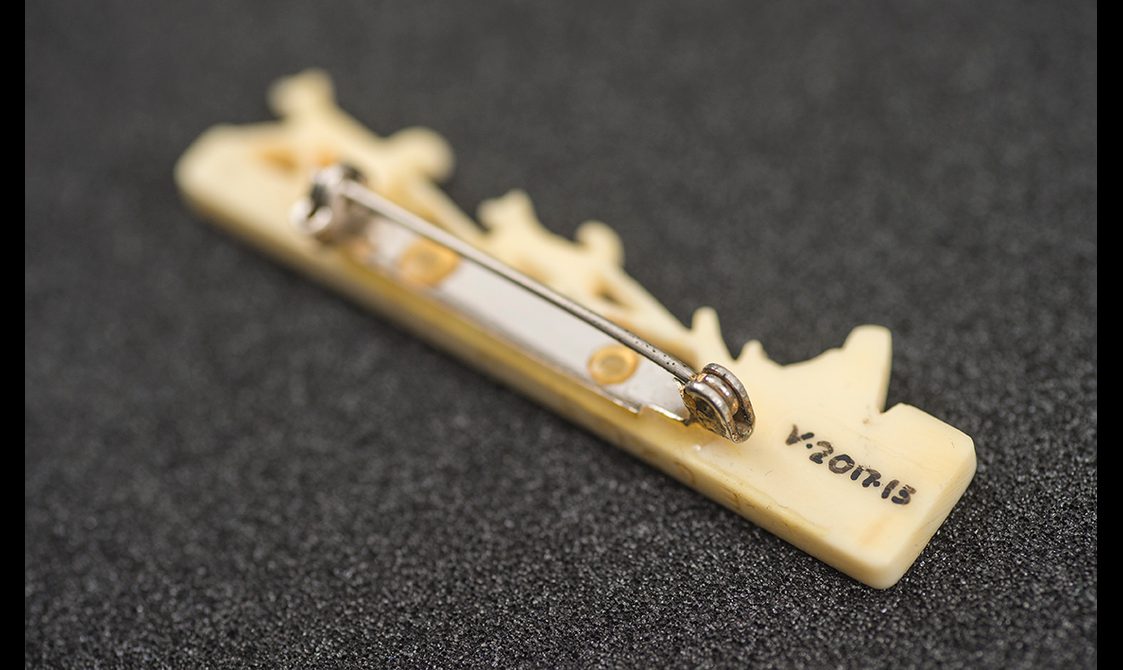
Object labelling
This training sets out our best practice guidelines for labelling objects in museum collections.
| This training is for | Level | Length | How to complete the training |
|---|---|---|---|
| People working with museum collections | Beginner to learn the techniques/advanced for putting them into practice | 2hrs (approx) | Follow the sections below in order, watch the videos and read the added resources. |
Why do objects need labels?
Labelling objects in a collection can be time consuming but is a necessary step in enabling you to identify, manage and care for a collection.
It is crucial to remember that part of what makes an object important to a collection is its history.
Labelling an object with a number allows you to directly connect the object to all the information you hold about it including its history. The object label is a passport to travel, enabling an object to move without risk of losing its identity. The label however is not intrinsic to the object itself so there are aspects to consider before physically applying any label to the surface of any object.
This training and guidance sets out best practice techniques and materials when adding labels to objects in your museum collections.
Adding a label
There are a number of factors to consider before labelling an object:
Is the label secure?
- Ensure it is not likely to be accidentally removed or fall off easily
- Avoid areas of high abrasion such as rims on bases
Is it reversible?
- Ensure the label can be removed if needed and it comes off easily, without damaging or impacting the object.
Is it safe for the object?
- The method of labelling should be safe for the object’s surface and not cause any damage. Some varnished and pigmented surfaces will react with inks and chemicals.
Is it discreet?
- The placement should not deter from the overall appearance of the object or obscure details that could change its interpretation.
Is it visible?
- The number one rule with objects is to handle them as little as possible. This means the label should be visible with minimal object movement. For example, labelling a chair on the underside of a seat means you have to turn it over. Instead, consider placing the label on the back of a leg.
Is it clear and accurate?
- Practice clear writing and look up the number before applying it to the object. One person’s handwriting might be another person’s scribbles!
Are there removable parts?
- If the object has multiple parts, it is crucial to label each part to prevent them from getting lost. Much like when we travel to the airport, the object doesn’t want to lose any of its luggage!
Image gallery



Materials to avoid
Museums and galleries have been labelling objects with numbers for many years; with this in mind it is not surprising that materials and methods used have changed as technology and knowledge has evolved.
Many objects in collections bear the scars of past labelling methods but all we can do is stay abreast of what is safe and works best for what we know at the present.
There are however some commonly used items for labelling that should be avoided at all costs despite seeming useful.
We've listed them below:
| Material | Reason |
|---|---|
| Typing Correction Fluid | This material is extremely harmful to the surface of objects and often is irreversible. Not only that, it ages badly and may flake and disappear in spots leaving a shadow of the number but not an identity. |
| Nail Varnishes | Although lovely on nails, everyone who uses it has experienced the harm it does to the nail surface. The same goes for an object. Not only are the pigments/dyes used possibly irreversible but the chemicals added to the varnishes have the potential to react with the surface of an object. |
| Nail Polish Remover | Although these products often contain Acetone, it is best to steer clear of polish removers as many of them contain additional conditioners and chemicals designed to add smell or colour or just ease the harm on a human nail; these additions could cause irreversible harm to an object’s surface. Always ensure you use pure Acetone when required to remove labels. |
When not to label
It is important to always choose a labelling method appropriate to the object.
If the object is very fragile or is a loan to your collection, you can use a simple Tyvek tag to attach its number and ensure its identity is not lost instead.
In addition, the below information is a guideline only and you should always consult with a conservator before labelling something with what you feel may not be appropriate.
Object labelling by material

Labelling paper objects
In this training, we demonstrate best practice techniques for applying labels to paper objects.
Labelling a metal or ceramic object
In this training, we demonstrate best practice techniques for applying labels to metals and ceramics.
Labelling a textile object
In this training, we demonstrate how to apply a label to a textile object.
Further training resources

Object handling
This training sets out our guidelines and best practice for handling museum collections.
Object packing
After good handling practices, the next most important skill to apply to consulting and moving collections is good packing. This training sets out our guidelines for the best methods and materials for packing objects.
Integrated pest management
This training sets out our guidelines and best practice for integrated pest management.